Quang Ninh is a coastal province in Northeast Vietnam. The province is seen as a miniature Vietnam because it consists of sea, islands, plain, midland, mountain and border. As planned, Quang Ninh belongs to key economic region of both Northern region and Red River Delta. This is a major coal mining province of Vietnam with Ha Long Bay, the natural heritage and natural wonders of the world.
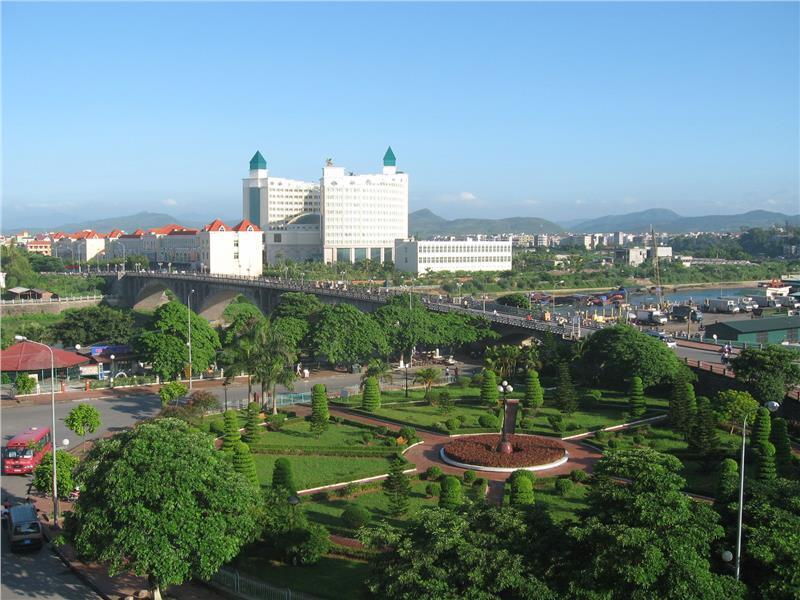
Quang Ninh is located in the Northeast Vietnam, has the shape of an oblique rectangle inclined in northeast-to-southwest direction. To the east, the province is adjacent to the Gulf of Tonkin. To the west, it borders with a forest and mountain region. The province lies from 106°26' to 108°31' east longitude and 20°40' to 21°40' north latitude. From east to west, the widest place is 195km. The length from North to South is about 102km. The province shares border with China in the northeast, the Gulf of Tonkin in the south with 250-kilometer long coastline, Hai Duong and Haiphong in the southwest and provinces of Lang Son, Bac Giang, and Hai Duong in the northwest.
Quang Ninh is a midland and mountainous province in the coastal area with more than 80% of its area being made up of mountains and hills. More than 2000 islands emerging on the sea are considered mountains. Quang Ninh terrain is divided into 3 areas including mountainous area, coastal plains and sea and island. The sea bottom terrain of Quang Ninh is not smooth, and has an average depth of 20 m.
Located in the sub-tropical climate, Quang Ninh climate is symbolic of the climate of North Vietnam with hot and humid summers and cold and dry winters. The average temperature is from 21 – 23°C; the annual average rainfall is 1995m; the average humidity is 82 - 85%. In addition, due to the influence of the sea, Quang Ninh climate is generally cool, warm and favorable for development of agriculture, forestry and other economic activities.
Quang Ninh has about 30 rivers and streams with the length of more than 10km. The catchment area does not exceed 300 square kilometers, including 4 large rivers of Thai Binh River, Ka Long River, Tien Yen River and Ba Che River. But most rivers are shorts, small and steep slope. Quang Ninh is one of 25 provinces and cities having border line, and the only province having border on mainland and sea with China. On the other hand, Quang Ninh is one of 28 beach provinces and cities with 250-kilometer coastline. The province has 2077 islands with the area of 11.5% of the natural area.

Quang Ninh is a land of rich history. In Halong Bay, archaeologists found the remains of prehistoric people from 3000-1500 BC. Characteristics of this period were Halong culture with many archaeological shells used as jewelry and money exchange, ancient animal bones and human bones. During the period of Hung Kingsm Quang Ninh today belonged to Luc Hai tribe, one of the 15 tribes of Van Lang State. In the feudal system, Quang Ninh province called Luc Chau in Ngo Dynasty, Dong Hai in Ly Dynasty, Hai Dong in Tran Dynasty, Tran An Bang in Le Dynasty.
After August Revolution 1945, Vietnam gained the independence, and stepped into a modern democratic period. In 1963, Government Democratic Republic of Vietnam established Quang Ninh province from Hong Quang and Hai Ninh. According to the setting of Ho Chi Minh, the name of the province is the name of two old provinces of Quang Yen and Hai Ninh. The area of the province of Quảng Ninh is 8239.243 km ².
Quang Ninh has 4 cities (Cam Pha City, Halong City, Mong Cai City, Uong Bi City), 2 towns (Quang Yen, Dong Trieu) and 8 districts (Ba Che, Binh Lieu, Co To, Dam Ha, Hai Ha, Hoanh Bo, Tien Yen, Van Don). In which, there are 186 communal administrative units with 67 wards, 8 towns and 111 communes. Quang Ninh is the province with the most cities in Vietnam.
By 2012, the population of Quang Ninh reached nearly 1,177,200 people; the population density is 193 people/ km². Among them, the urban population is 620,200 people and the rural population is 557,000 people. According to General Statsistics Office of Vietnam, Quang Ninh has 34 ethnic groups and foreigners living together. Among them, the ethnic group accounts for the majority of Quang Ninh population is Kinh people with 1,011,794 people, followed by Dao ethnic people with 59,156 people, Tay ethnic people with 35,010 people, San Diu ethnic people with 17,946 people, San Chay ethnic people with 13,786 people and Hoa ethnic people with 4,375 people. In addition, there are other ethnic groups including Nung people, Muong people and Thai people.
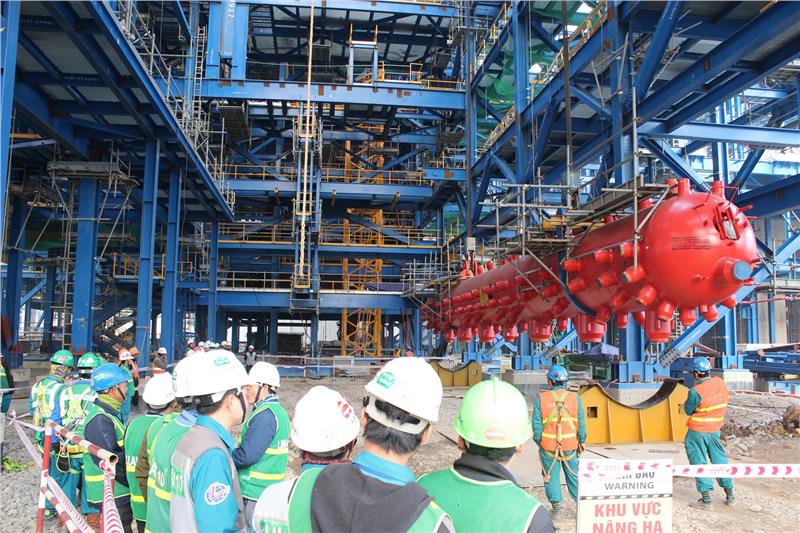
Quang Ninh is located in the northern key economic region and one of 4 major tourism centers in Vietnam with Halong Bay - the world natural heritage twice recognized by UNESCO for its aesthetic, geological and geomorphological value. Quang Ninh has many economic zones, commercial centers. Mong Cai is the focal commercial point between Vietnam - China and other countries in the region. In 2013, the province-level competitiveness index of Quang Ninh ranked the forth among provinces and cities of Vietnam.
Quang Ninh converges full of favorable conditions for socio-economic development in the process of industrialization and modernization of the country. As a province with the large mineral resource, the coal reserves of Quang Ninh accounts for 90 % of the coal reserves across the country. Providing raw materials for manufacturing of building materials, for the domestic manufacturing industry and exports, has important contribution to economic development and GDP growth of Quang Ninh province. Quang Ninh with the world natural heritage - Halong Bay, Yen Tu relic, Bach Dang Beach, Cua Ong Temple, Quan Lan Temple, and Bai Tho Mountain... is favorable for sea tourism development, ecotourism, sport tourism and spiritual cultural travel. Quang Ninh is seen as a spot of economic belt in the Gulf of Tonkin, an important gateway to the economic corridor of Hanoi-Haiphong-Quang Ninh. There seaports, deepwater port capable of handling thousands of tons of ships create more favorable for sea transport sector between Vietnam and other countries in the world. Quang Ninh's border gates systematically distributed along the border, especially, Mong Cai international border gate is the exchange of trade, tourism, service.
Quang Ninh economy ranked the fifth among the provinces and cities of Vietnam in the state budget revenue (2012) after Ho Chi Minh City, Hanoi, Ba Ria - Vung Tau province and Haiphong City. By the end of 2014, GDP per capita of Quang Ninh reached more than 3500 USD. The average salary of workers in key sectors as coal, electricity, port and tourism are high.
Education: Currently, in the province there are 421 schools including 46 high schools, 146 junior secondary schools, 177 primary schools. In addition, there are 205 kid-gardens.
Health: The healthcare facilities are invested to meet the need of health care of people and domestic and foreign tourists. In 2010, Quang Ninh has 15 hospitals, 9 regional polyclinics, 10 provincial health centers, 14 health center in districts, and 186 commune health stations.
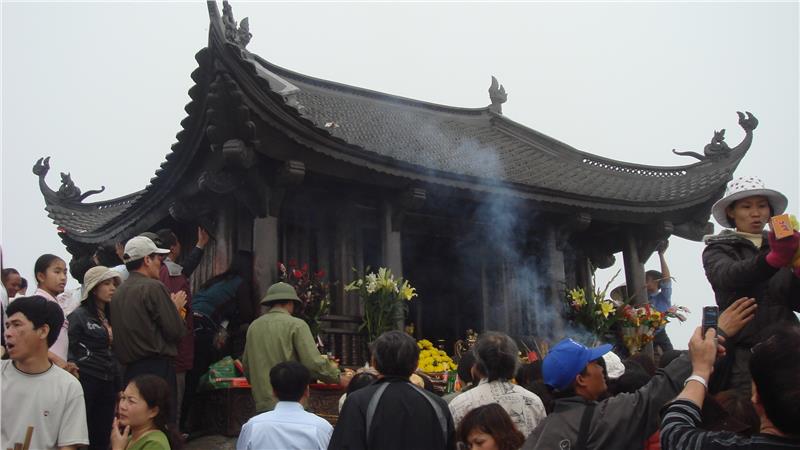
Quang Ninh is a land with long-standing culture. Halong culture is considered as milestone of the evolution of Vietnamese people. Like other provinces, people living in Quang Ninh culture is very rich and diverse. Buddhism appeared in this land very early. Before King Tran Thai Tong (1225 - 1258) practiced Buddhism in Yen Tu Mountain, many religious men had practiced here. Kinh Tran Nhan Tong (1279 - 1293) chose Yen Tu as the place to practice and establish Truc Lam Buddhist Zen in Vietnam. In the 14th century, Yen Tu and Quynh Lam (Dong Trieu) is the center of Vietnamese Buddhism practicing monks for the whole country.
Through many centuries, Buddhism has still existed with hundred of pagodas in Quang Ninh, including famous pagodas as Loi Am, Long Tien (Halong), Linh Khanh (Tra Co), Ho Thien (Dong Trieu) and Linh Quang (Quan Lan). Through many ups and downs, the destruction of nature and human beings, Quang Ninh currently remains appropriately 30 pagodas scattered in 8 districts, towns and cities. People worshiping other religions are not as crowded as Buddhist devotees. The common belief of Quang Ninh people is ancestor worship, Generals of Tran Dynasty worship and Tutelary God, Gods (Water God and Mountain God), Holy Mother (Lieu Hanh, Thuong Ngan, Mau Thoai).
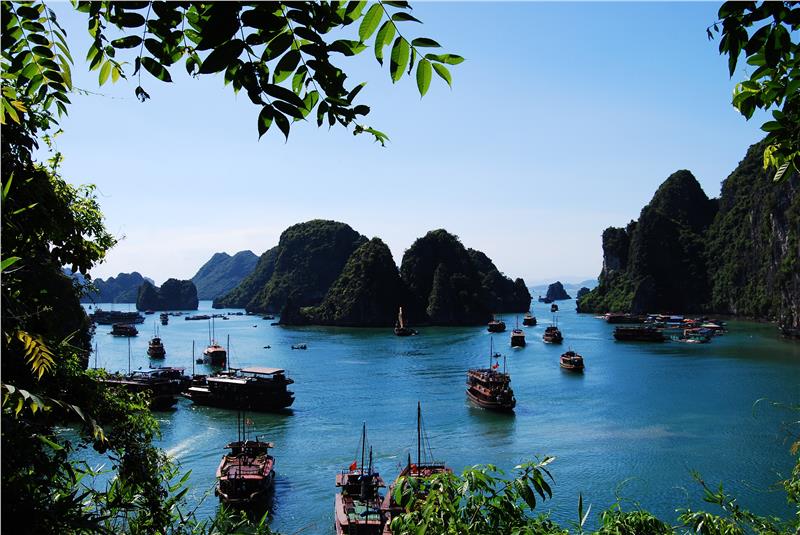
Quang Ninh is a province rich tourism potential, one of the top tourist destinations of growth tourism triangle in North Vietnam. The province owns Halong Bay - the world natural heritage and world heritage site thanks to its geological and geomorphological value. Halong Bay is an ideal destination in Quang Ninh as well as the North Vietnam.
Halong Bay is one of 7 natural wonders, natural heritage in the world with the area of 1553 square kilometers and 1969 islands. In which, the world heritage site recognized by UNESCO has the area of more than 434 square kilometers with 788 islands which have special value of culture, aesthetics, geology, biology and economy. In the bay, there are many earth islands, caves, beaches and beautiful landscapes favorable for tourism development.
Bai Tho Mountain – a 106-meter high limestone mountain is located in the city center of Halong, adjacent to Halong Bay. The name “Bai Tho” of the mount originated from this legend. In 1729, Lord Trinh Cuong composed a poem in parallel with King Le Thanh Tong’s and the poem was carved next to the king’s poem. Standing on Bai Tho Mountain, visitors will be surprised at the breath-taking beauty of Halong Bay. You will see images of boats afar on the deep blue sea with the rocky mountain, the sky and the surrounding plants and flowers. Bai Tho Mountain is a beautiful spot in Halong Bay.
Long Tien pagoda built in 1941 is the largest pagoda and a famous scenic spots of Halong City. The pagoda is located under the foot of Bai Tho Mountain, near Halong Market, in Long Tien Street. Its architecture was based on the early Nguyen dynasty’s architectural style, the style of "chong giuong gia chieng", patterns of dragon and phoenix and stylized flowers. On the hall’s rooftop, it is a porcelain statue with images of dragons flanking the moon.
At the two sides of the hall are 2 parallel sentences. The main palace is where Sakyamuni, Bodhisattva of Mercy and other Buddhas are worshiped. The right palace is for worshiping Tran Hung Dao and the left palace is for worshiping of Tam Phu Mother Goddess. Long Tien Pagoda festival lasts until the end of the 2nd month of the year, attracting many visitors. People come here to pray to "Tran Deity" for good fotune.
Yen Tu relic consists of a system of temples, pagodas, towers and old trees blended with the natural landscapes scattered from Doc Do to Yen Tu Mountain, Uong Bi city, Quang Ninh. The system of pagoda and temple of Yen Tu focuses on the eastern slopes of the mountain. In addition to Bi Thuong Pagoda in Doc Do, Cam Thuc Pagoda in Uong Bi, Lan Pagoda on Nam Mau commune, the road leading to Yen Tu pass a journey as follows Giai Oan Pagoda - Hoa Yen Pagoda - Cong Troi Pagoda (Heaven Gate), then Pho Da Pagoda, Bao Sai Pagoda and Dong Pagoda. Dong pagoda is located on Yen Tu top, 1.068m above the sea level. It was inaugurated on January 30, 2007 and is considered the most special pagoda in Asia. It has the height of 3.35m and patterns typical of the Tran Dynasty.
Yen Tu was more famous when Kings of Tran Dynasty (the 13th century) chose Yen Tu as the place to practice and develop Buddhism, establish Truc Lam Buddhist Zen. Therefore, the system of majestic temples, pagodas and towers was embellished and built through dynasties.The majestic beauty of mountain blended with the ancient and tranquil features of temples, towers with sequoia, Plumeria, Phyllostachys and apricot trees growing in roadsided makes tourists forget the tiredness when climbing the steep slopes.
Festival
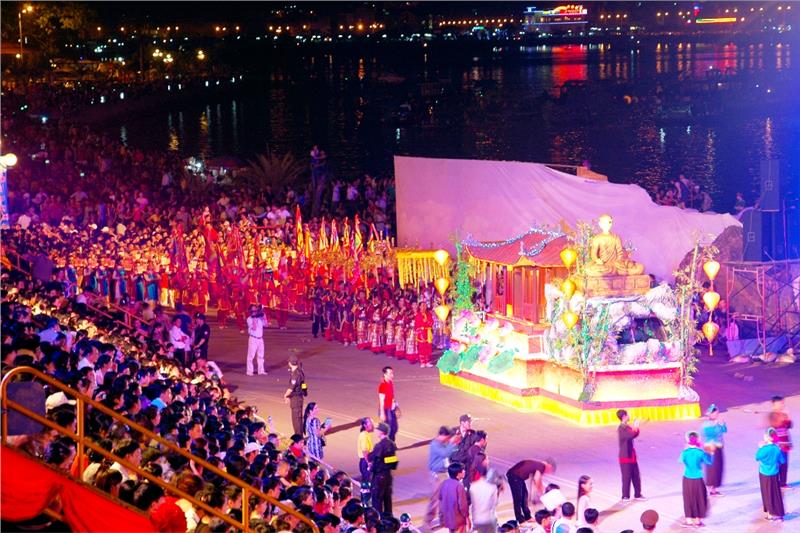
Traveling Quang Ninh, tourists will have the opportunity to immerse into the unique and diverse festivals stretching from east to west of the province. Each festival brings tourists experience and deep sense about the simplicity and warmth in the cultural and spiritual life of people in the northeast region. Mentioning to Quang Ninh festivals, we cannor but mention to festivals as festival in Da Village (Thanh Lam commune, Ba Che district), Long Tong Festival (Ba Che district), Luc Na Temple Festival (Luc Hon commune, Binh Lieu district), My Son Temple Festival (Phu Hai commune, Hai Ha district), cultural festivals of Dao ethnic people in communes of Dong Ngu, Tien Lang, Phong Du, Yen Than (Tien Yen district). In addition to their own unique features, festivals in Halong reflect the spiritual cultural life and material life of each ethnic group.
Lasting in 3 spring months, Yen Tu Spring festival is the longest festival in the province. Each year, this pagoda attracts millions of tourists coming here to go sightseeing and worship Buddha. In addition to Yen Tu Spring Festival, Quang Ninh has many unique festivals as Tien Cong festival (Quang Yen town), Ba Men Temple festival of fishermen of fishing village in Halong Bay, An Sinh Temple festival (Dong Trieu)... Especially, Quang Ninh festivals are held not only in spring but also year round. Besides traditional festivals, Quang Ninh currently attracts domestic and foreign tourists by new festivals as Halong Carnival and Halong Cherry Blossom Festival. Although Halong Cherry Blossom Festival is a new festival, it has appealed tourists by its own unique features. Halong Carnival held over the years has created its own cultural characteristics and become the trademark of Quang Ninh tourism. With its uniqueness, diversity of each region, the interface between traditional and modern features, the festivals of Quang Ninh increasingly express profound cultural beauty of the people here.
